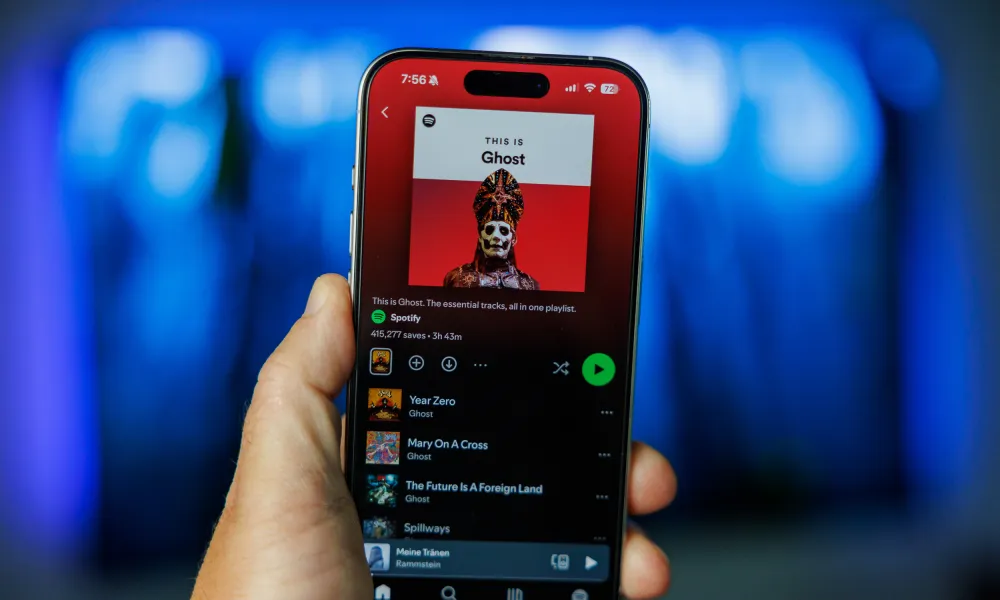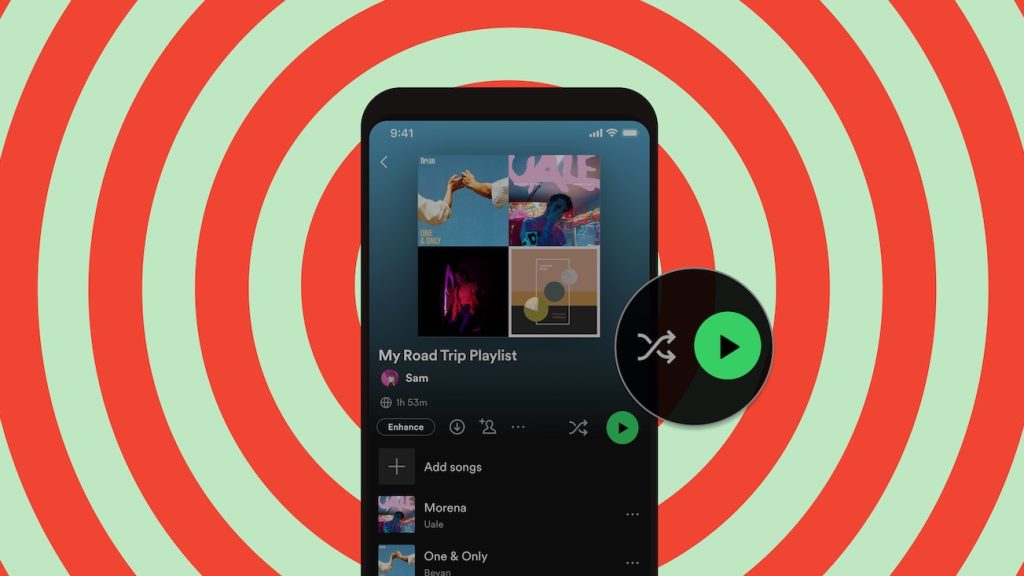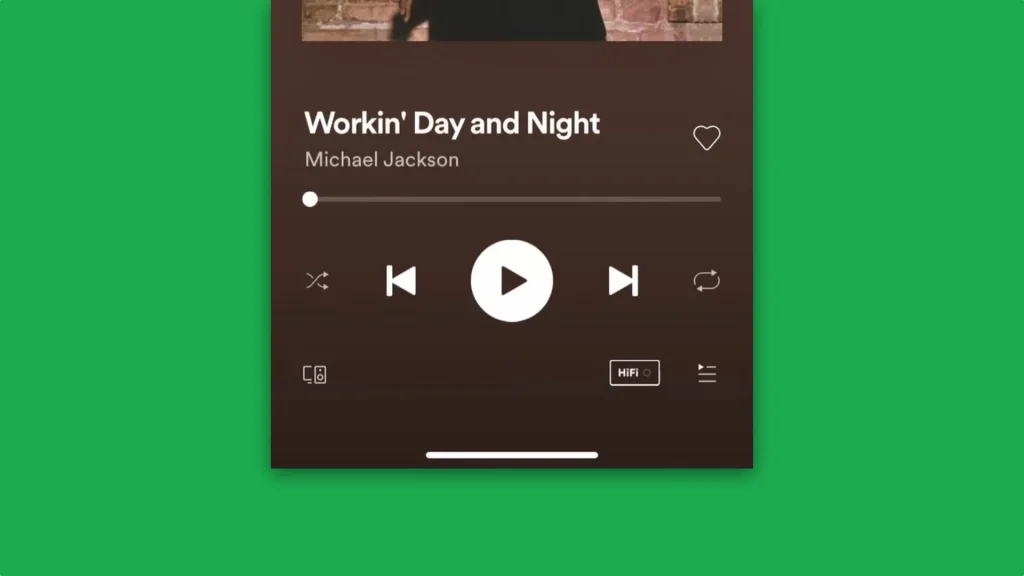How Spotify personalizes playlists with AI

Introduction
Spotify AI uses advanced AI to create playlists that feel personal. The platform collects data about what you listen to daily. It tracks your favorite songs, artists, and genres. It also notices when you skip tracks or replay them. These actions tell Spotify what you like and dislike. The AI then analyzes this data to understand your music taste. This process happens every time you listen. Spotify continuously learns about your preferences and adjusts playlists to match them.
Machine learning plays a big role in Spotify’s playlist personalization. The AI doesn’t only focus on your listening habits. It compares your data with other users who have similar tastes. This process is called collaborative filtering. It helps Spotify discover songs you might love but haven’t heard yet. For example, if many people who like the same artist as you also listen to another artist, Spotify will recommend their music to you. This ensures that your playlists stay fresh and exciting.
Spotify also uses natural language processing (NLP) to enhance playlist recommendations. The AI reads song descriptions, reviews, and even social media posts. It gathers insights about songs and artists that are trending. It combines this information with your listening history to suggest songs that fit your mood. For instance, if you listen to upbeat tracks in the morning, Spotify might recommend energetic songs for your morning playlist. This approach makes your experience more enjoyable and tailored to your daily routine.Comparison of saavn and spotify mod here.

Partnerships With Schools to Promote Music Learning
Discover Weekly is one of Spotify’s most popular AI-driven playlists. It refreshes every Monday with a new set of songs. These tracks are chosen based on your recent listening habits. The AI picks songs that match your favorite genres and styles. But it doesn’t stop there. Spotify includes tracks from artists you’ve never heard of. This feature helps you discover new music while staying within your comfort zone. The AI behind Discover Weekly uses audio analysis to pick songs. It breaks down tracks into various components. These include tempo, key, and rhythm. By analyzing these elements, Spotify identifies songs that match your preferences. This method ensures the playlist feels consistent and enjoyable. You might not even notice that the songs are from different artists. The flow feels natural, making the playlist perfect for casual listening. Read our article on how Spotify Mod apk is better than Deezer here.

Collaboration With Nonprofits Supporting Music Access
Spotify also uses feedback to improve Discover Weekly. If you save a song or add it to another playlist, the AI considers it a positive response. If you skip a track, it takes note of that too. Over time, the AI gets better at understanding what you want. This feedback loop keeps your playlists relevant and personalized. It’s like having a music assistant that knows you better every week. Spotify’s AI goes beyond tracking your listening habits. It also listens to the music itself. The platform uses audio analysis to understand the technical details of every track. It examines features like tempo, pitch, and energy levels. This data helps the AI categorize songs into different moods and genres. For example, a song with a high tempo and loud dynamics might fit into a workout playlist. A slow, melodic track might go into a relaxation playlist. You can read on how safe our mod is here.

Engaging Artists to Inspire Young Musicians
The AI also looks for patterns in the music you enjoy. It identifies similarities between songs you frequently play. This analysis helps Spotify recommend tracks that match your taste. For instance, if you like indie rock with soft vocals, the AI will find similar songs from other artists. This process ensures that your playlists feel cohesive and tailored to your preferences.
Audio analysis also helps Spotify create mood-based playlists. These include playlists like “Chill Hits” or “Mood Booster.” The AI selects songs that fit the theme and mood. It doesn’t just rely on genre labels. Instead, it focuses on the actual sound and feel of the music. This approach makes mood-based playlists more accurate and enjoyable. Spotify’s AI doesn’t just recommend songs. It tries to predict your mood. The platform tracks when and where you listen to music. It notices patterns in your behavior. For example, you might listen to calm music at night or energetic tracks during workouts. The AI uses this data to create playlists that fit your mood and activity.
How Spotify Predicts Your Mood with AI
Spotify also considers external factors like time of day and weather. If it’s a sunny afternoon, the AI might suggest upbeat songs. On a rainy evening, it might recommend mellow tracks. This context-aware approach makes playlists feel more personal. It shows that Spotify understands not just your taste but also your lifestyle.
The AI also learns from your interactions with playlists. If you skip a track, it adjusts its predictions. If you save a song, it takes that as a positive signal. Over time, this feedback helps Spotify get better at predicting your mood. This makes the experience more enjoyable and personalized. You can take a look at the comparison of spotify apk and tidal here.
Why AI Keeps Spotify Ahead of Competitors
The AI also helps Spotify discover new artists. It recommends emerging talent to users who might enjoy their music. This approach benefits both listeners and artists. Fans get fresh content, and artists reach a wider audience. It’s a win-win situation that sets Spotify apart from its competitors. You can take a look at the comparison of spotify apk and Soundcloud here.

Creating Playlists That Serve as Educational Tools
Spotify also uses AI to improve its advertising. It analyzes user data to create targeted ads. This ensures that listeners hear ads that match their interests. For example, a user who loves electronic music might hear ads for a nearby music festival. This targeted approach makes ads feel less intrusive and more relevant. Download the Lite version here.
How Spotify Uses Collaborative Filtering for Recommendations
Spotify employs collaborative filtering to improve its recommendations. This method compares your listening habits with those of other users. It identifies patterns and shared preferences among users with similar music tastes. For example, if two users frequently listen to the same artist, Spotify assumes they might enjoy other similar artists. It uses this data to recommend songs you haven’t discovered yet.
The AI considers millions of users’ listening behaviors to make accurate suggestions. Collaborative filtering works well for discovering less-known artists. If a small group of users enjoys a niche band, Spotify might recommend that band to you. This method ensures a balance between popular hits and hidden gems. It keeps your playlists interesting and diverse.
Spotify’s collaborative filtering doesn’t rely solely on user behavior. It also incorporates data from song characteristics. This hybrid approach enhances accuracy. It combines user-based and item-based filtering for better recommendations. This means Spotify not only considers what others like but also how songs sound. It creates a more refined and personal listening experience. Learn how to download songs here.
You can take a look at the comparison of spotify apk and Apple Music here
How Spotify Blends Human Expertise with AI
While AI drives Spotify’s personalization, human input still plays a crucial role. Spotify employs music curators and editors to create handcrafted playlists. These experts select tracks based on trends, moods, and themes. Playlists like “RapCaviar” and “New Music Friday” are examples of human-curated content.
The AI works alongside these experts to optimize recommendations. It analyzes the success of curated playlists and suggests ways to improve them. For instance, if users skip a specific track often, the AI flags it for review. This collaboration between humans and AI ensures high-quality playlists. It combines the creativity of humans with the efficiency of AI.
Spotify also uses human feedback to train its AI models. It collects data from surveys and user reviews. This information helps the AI understand what listeners want. Human input ensures that Spotify doesn’t rely solely on algorithms. It adds a layer of intuition that machines cannot replicate. Learn about Spotify Lossless audio here.
How Spotify Integrates AI for Mood-Based Playlists
Spotify creates mood-based playlists using a combination of AI and data analysis. The platform studies your listening habits to identify patterns. It notices when you play certain types of songs. For example, you might listen to upbeat tracks during workouts or relaxing tunes in the evening. Spotify uses this information to create mood-specific playlists.
The AI also analyzes the tempo, rhythm, and energy levels of tracks. It matches these characteristics with your preferences. For instance, a playlist like “Mood Booster” features songs with high energy and positive lyrics. On the other hand, “Chill Hits” includes slower, calming tracks. This attention to detail ensures that each playlist matches your mood perfectly.
Spotify’s mood-based playlists also evolve over time. The AI adapts to changes in your behavior. If you start listening to more upbeat music, it adjusts accordingly. This dynamic approach keeps your playlists relevant and enjoyable. It ensures that Spotify remains your go-to platform for personalized music. Learn about Spotify Gift cards here.


Spotify uses AI to analyze your listening habits and suggest songs based on your preferences, mood, and past behavior.
Collaborative filtering is an AI technique Spotify uses to recommend songs by comparing your listening habits with others who have similar tastes.
Yes, Spotify’s AI predicts your future preferences by analyzing trends in your listening history and adapting to changes over time.
Spotify’s AI analyzes song characteristics like tempo and rhythm, along with your listening patterns, to create playlists that match your current mood.
Spotify’s AI combines user behavior, audio analysis, and emerging trends to provide a personalized and dynamic music experience.
